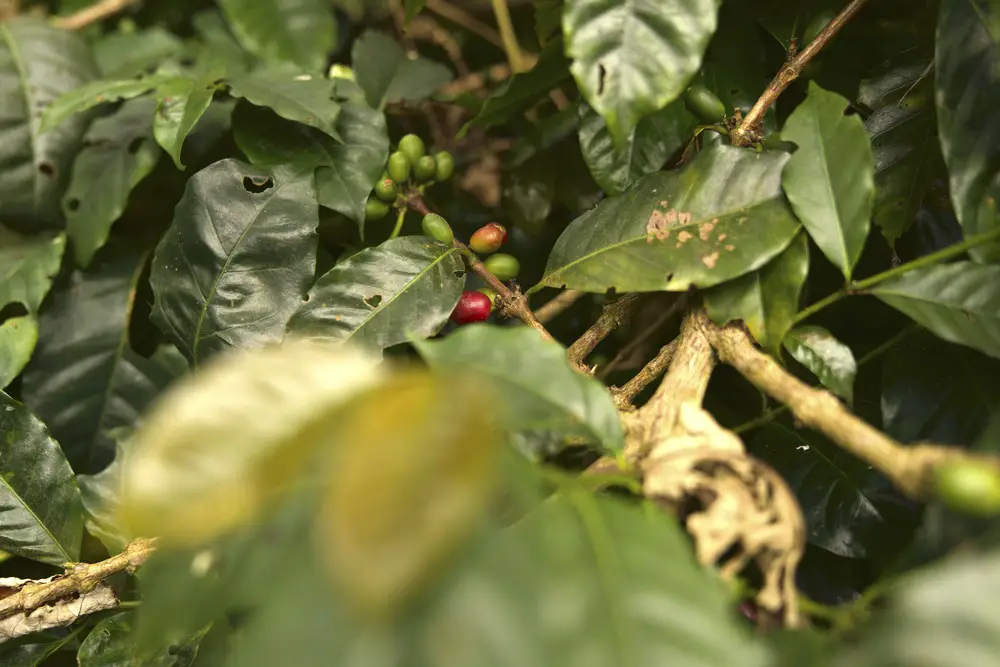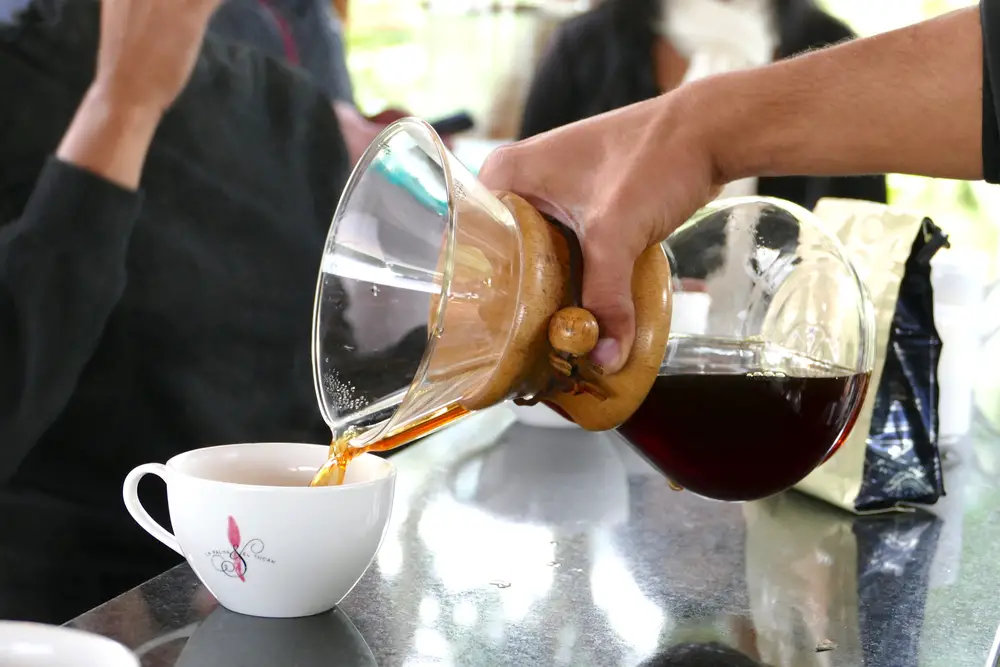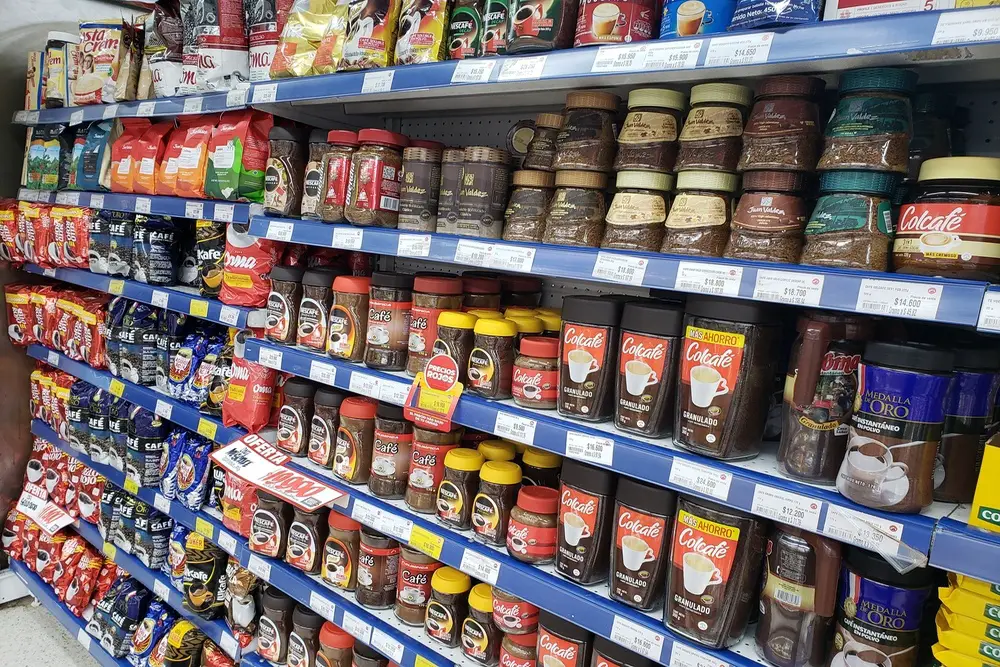Byron Blue Estate is grown in Australia, in the Northern Rivers area of New South Wales, in the rich, volcanic soil for which the area is famous. More than 45,000 coffee trees grow on 165 hectares, which receive more than 2,000 mm of rainfall annually. The altitude and climate in this area are very similar to those in Hawaii, which creates optimal conditions for coffee growing.
Table of Contents
Features Byron Blue coffee
Australian single-origin Byron Blue coffee is grown in northern New South Wales by veteran coffee grower and coffee professional Michael Bullivant. Numerous types of coffee such as K7, SL 34 and Catuai are grown and processed there.
Everything on the farm is taken care of by Mark Bullivant, who has overseen the farm from its beginnings when the land was just a rudimentary airstrip to the incredible plantation it is today. Few can match Mark’s incredible experience in the coffee industry, having roasted coffee for over forty years before becoming a grower. For Mark there is only one criterion: Taste. This means that all processes and activities at Byron Blue are focused on producing the best possible coffee.
All processing is done on the farm using their own dedicated harvesting and processing equipment.
Type of coffee K7
K7 is a relative of Bourbon known for its resistance to rust and coffee berry disease and is commonly used in modern breeding programs in Africa. It produces a large bean with good cup quality and high yields.
Coffee type SL34
SL34 is used in production for its exceptional cup quality and high yield, although it requires more maintenance than other varieties as it is susceptible to rust, coffee berry disease and nematodes. It has a similar genetic background to Typica and has adapted well to high-altitude environments with abundant rainfall.
Catuai coffee variety
Catuai is a cross between Mundo Novo and Caturra, related to Bourbon. The result is a small, compact coffee plant that the Instituto Agronómico (IAC) of the State of Sao Paulo in Brazil. Due to its size, it can be planted quite densely and is a very productive plant.
Byron Blue coffee processing
When washing, it is important that all phases of cultivation, harvesting and fermentation are carried out correctly, because the taste depends entirely on the bean absorbing sufficient nutrients and sugars during its growth.
The process begins with the pulping of the coffee cherries, leaving the mucilage intact for fermentation. The fermentation process can last anywhere from 1 to 4 days, giving the bacteria in the fermentation tank time to break down the slime, which is then “washed out” at the end of the fermentation. After the mucilage has been removed, the coffee is carefully dried in the sun.
Tasting notes
Australian Byron Blue coffee has balanced acidity, a smooth body with notes of dark chocolate and fruit juice, very clean and smooth. There are also notes of chocolate and cereals in the aroma.
Eco-friendly Byron Blue coffee
90% of the coffee purchased is organic and certified by the Rainforest Alliance. Non-profit organizations such as the Rainforest Alliance and Fair Trade ensure that the plantations registered under their name around the world provide housing, education, fair wages, sustainability, water protection and reforestation.
Certification
Byron Blue coffee also carries the Green Frog (Rainforest Alliance) certification seal, indicating that it has been tested to standards for environmental, social and economic sustainability. These include biodiversity, conservation, improvement of living conditions, human well-being, conservation of natural resources, and effective planning and management systems.
Coffee bags
The coffee bags are recycled internally and also given away. They can be used to make cushions, picture frames, seat covers, garden rugs, and even sack races for children.
Recycled cardboard boxes
Cardboard shipping boxes are made from recycled material and are 100% recyclable. They use boxes from companies that are members of the Australian packaging Covenant and committed to sustainable design, higher recycling rates and less waste going to landfill.
Solar panels
The factory’s roof is covered with solar panels that produce 100% of the electricity, thus reducing the ecological footprint.
Compostable to – go cups and lids
The compostable to – go cups are made from sustainably grown trees from managed plantations.
The to -go lids are made from a bio-plastic made from plants rather than fossil fuels and are compostable, meaning less waste ends up in landfill.
History of Coffee in Australia
The coffee beans came with the First Fleet. This is the name of the convoy of eleven ships that left Britain on May 13, 1787 to found a penal colony in Australia. However, the first recorded coffee plantation was in 1832 at Kangaroo Point, Brisbane.
From the 1880s to the early 1920s, Australia was nearly self-sufficient: up to 60 producers grew around 40 percent of the coffee consumed in the country.
The Great Depression, rising labor costs and Australia’s large, traffic-unfriendly expanse stalled the industry until the 1980s, when some pioneers resumed cultivation and developed mechanized harvesting techniques that transformed the landscape.
Australian coffee is not described as either too strong or too fruity. It’s a pleasant and balanced cup that everyone can enjoy.
Conclusion
This Australian Byron Blue Estate Washed Single Origin coffee is internationally renowned for its production method and quality flavor characteristic of the region. It is also ideal for espresso, particularly black coffee, and for filter brewing methods such as Pour Over and Chemex.



